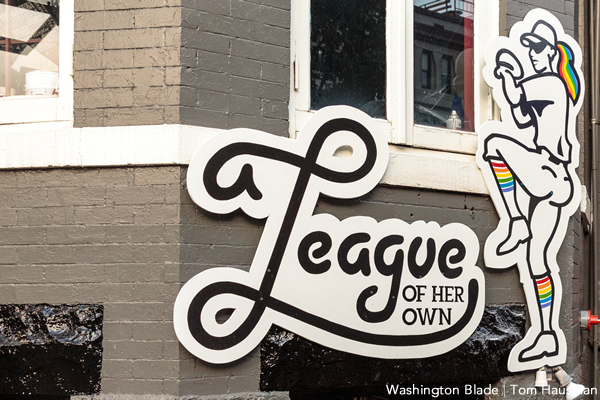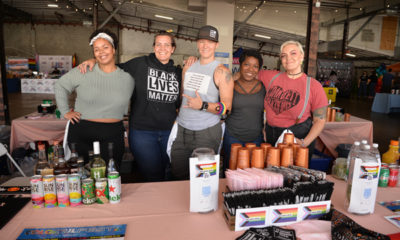a&e features
A murky future for Phase 1
Owner mum on plans to reopen; staffers say they were fired
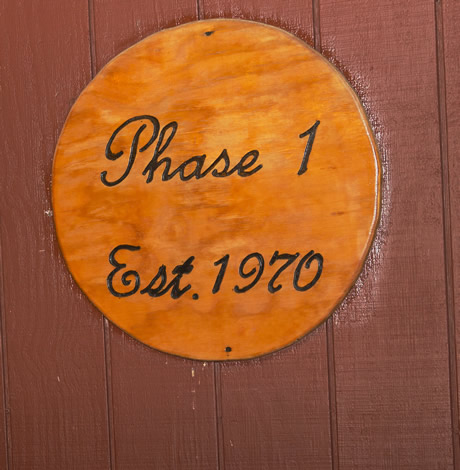

The future of Phase Fest is in question now that Phase 1 is closed. (Washington Blade file photo by Nicole Reinertson)
‘Phasepocalypse Now’
Feb. 6
Scandal DC
With DJ LezRage and DJ Deedub
the D.C. Kings Brolo and D.C. Gurly Show
Doors 9:30 p.m., performance 10
1811 14th St., N.W.
It’s the end of Phase 1 as we know it and nobody feels fine.
What is going on at the famed lesbian nightclub in D.C.’s Capitol Hill neighborhood that closed — ostensibly temporarily — last month?
The LGBT landmark, which has long boasted of being the oldest continually operating lesbian bar in the country, was open for New Year’s Eve and a few days thereafter but abruptly on Jan. 7 announced on Facebook that it “will be closed temporarily as we make some upgrades.”
Sounds reasonable enough on the surface, but the vagueness of the announcement, the fact that no details or target reopening date were given and nothing changed on its official website (phase1dc.com hasn’t been updated for months and there’s no sign on the door of the physical location indicating it’s closed) have led to rampant speculation among fans of the bar. The clincher, however, is that the entire staff was let go as well.
But it hasn’t stopped the party as the Scandal DC team, which just started staging in December what are said to be monthly events, is holding “Phasepocalypse: Now” on Feb. 6 at the Black Cat and using the official Phase 1 Facebook page to cross-promote it.
Angela Lombardi, who worked at Phase 1 for just over a decade and managed it for nine years, is part of the Scandal team (with Katy Ray) and says the event is needed because the Phase closed abruptly.
“Basically it’s just an excuse for all of us to get together and feel we have a little bit of home even if it’s not at Phase 1,” Lombardi says. “The (D.C.) Kings, the Gurly Show, all the original staff members will be there. It’s a chance for us all to feel a little better. Not just a selfish party for all of us to wallow but because there was too much good that was happening to just let it go.”
So is the location at 525 8th St., S.E. (not to be confused with Phase 1 Dupont, a spin-off club that was open occasionally in the old Badlands/Apex space off Dupont Circle) really being renovated — the exterior shows no signs of it so far — or will longtime owner Allen Carroll close the 45-year-old bar or perhaps wipe the slate clean and start over with an entirely new staff? Now that the initial shock of the closing has subsided, the city’s lesbian community is hungry for details.
The short answer is nobody knows. Carroll is laying low — he didn’t return a half-dozen voicemail messages left at multiple locations (including Ziegfeld’s/Secrets, which he also owns) over the course of nearly a week and neither did he respond to another Blade reporter in January who tried to reach him when initially writing of the bar’s closing.
People who’ve known Carroll for years such as Rick Rindskopf, former manager of the shuttered Remington’s, aren’t surprised.
“This is normal for him, not returning calls,” says Rindskopf, who knew Carroll years ago at the old Follies movie theater and at Ziegfeld’s. “He just doesn’t do it. Allen has always been somewhat secretive about what he’s doing and what’s going on. He has expressed to me the desire to retire at some point — he’s in his 70s after all — … but nothing Allen does or doesn’t do surprises me. … He just generally doesn’t share what’s going on.”
Carroll, who’s gay, and his late partner, Chris Jansen, opened Phase 1 in 1970. Veterans of the Marines and Air Force respectively, they worked at adjacent bars on Eighth Street, S.E., Joanna’s, a lesbian bar where Carroll worked, was closing so he and Jansen sensed an opportunity. For a time, they also ran the Other Side, a large lesbian club that eventually morphed into Ziegfeld’s/Secrets.
Carroll did speak to the Blade five years ago on Phase 1’s 40th anniversary in Feb. 2010 and said the bar has always been special.
“We had hard times and good times, but it felt like home,” he said in 2010. “We always held on. They always come in and always say, ‘We know to come back here.’ It’s a good feeling.”
But this is the first time Phase 1 has been closed this long at one time. Some fear the bar may just fade into the sunset with a whimper instead of a bang. Others shrug it off as sad but merely a sign of the times and point to the closing of San Francisco’s the Lexington Club, which shuttered in October. In the last five or so years, other historic lesbian bars like Sisters in Philadelphia, T’s Bar & Restaurant in Chicago, the Palms in West Hollywood and the Egyptian Club in Portland, have also closed. Those involved cited gentrification and the accompanying skyrocketing cost of doing business as factors.
“I actually didn’t want to talk to people at first, but now I’m at my pissed stage,” Lombardi says. “Basically the way he phrased things to us was that even though some of us had been there longer than 10 years, we weren’t doing a good enough job and that he’s going to come in and close down for renovations and basically fix the busted sound system that we’d been asking to have repaired for years, paint and whatever else. … He wouldn’t come out and say it, so I said, ‘Oh, so I’m fired,’ and he said, ‘Well, I don’t know,’ and blah blah blah, but yeah, that’s pretty much how it went down.”
Senait, a Phase 1 institution who also worked there for 10 years, got a similar call on Jan. 4 and says it was both shocking and hurtful. Lombardi says Carroll initially suggested she inform Senait, but Lombardi insisted Carroll call her himself.
“My opinion is it could have been done in a more professional way,” Senait says. “People lose jobs all the time, but he could have called us in and said this is what is happening but he didn’t have the courtesy to do that. He just called us on the phone and said, ‘I’m letting you go.’”
Senait says she thinks the renovations are legit, though Lombardi says, “My mind would be blown if it’s anything more than a coat of paint and repairs to the sound system.” Some have questioned why the renovations couldn’t have been done on the four days per week the bar was closed.
“He said he was sort of thinking, I don’t know, two weeks or something,” Senait says. “He was not very clear about the whole thing. I think he started doing some stuff last [week]. I don’t think he’ll shut it down. I think he will reopen.”
Lombardi says tensions have been brewing for a while. She traces it back to 2012 when Carroll moved her to the then-new Dupont location, which she says she had misgivings about even at the outset, mainly because she didn’t think D.C. had enough lesbians interested in nightlife to keep both the cavernous Dupont location and the original Phase both running indefinitely, a hunch that turned out to be correct.
“I felt crippled there,” Lombardi says. “He wouldn’t let me do anything.”
About four years ago, Lombardi started spending time in Chico, Calif., helping her brother run the Maltese, a straight bar that also hosts gay events. Though she’d invested years into the Phase and even, at one point, hoped to buy it from Carroll, she says she eventually started spending more time in California. Senait would manage Phase 1 when she was gone.
“I’ve known for the last two years that things at Phase weren’t secure and it wasn’t sustainable,” Lombardi says. “It really pains me to say it because when it was good, it was so good. I kind of had a feeling I might just be left out in the cold someday and sure enough, that’s exactly what happened.”
Ken Vegas (aka Kendra Kuliga), director and founder of the D.C. Kings, says that while the timing was a shock, he’d had a sense for “several years” that things were uncertain there. The Kings, who are celebrating their 15th anniversary in March, performed 180 consecutive monthly shows at Phase 1 starting in March 2000.
“It’s kind of like holding your breath,” Vegas says. “I’m not completely surprised that it went down. It sucks. A lot of my friends are people who worked there and they’re the people who are getting the effects of this decision . … But I’m still kind of stunned. Even if it does re-open, if the people who were staffing it there are not rehired, it’s not going to be the same. It wasn’t the four walls that made it the Phase, it was the people — Angela, Jasmine, Little Fitz (Erin Fitzgerald), Senait, Ellis — those were the people who showed up even when they knew they were probably only going to make $20 if they were lucky. They kept it open and made it a safe space anytime for the community to come in, have a drink and not feel judged. … It was a safe space for the Kings and the Gurlys to come share our art and feel completely at ease.” (The Kings have continued performing monthly — after the Feb. 6 event, they’ll be at the Lodge in Boonsboro, Md., in March.)
Even with the hurt feelings, Lombardi and Senait describe Carroll as family.
“I love Allen, he’s family even through all of this,” Lombardi says. “I will never take away what he did for this community or take it for granted. He gave me a life, he helped me discover who I am. That’s priceless, so even though things are ending on a rather bitter note, I love him and I hope the Phase will go on another 40 years. I just thought I’d be a part of it.”
Senait has similar feelings.
“He’s like a second father to me,” she says. “I have nothing against him. I want him to be successful. I love that bar. It was a second home to me, where I found myself as a gay person and became comfortable.”
They also agree that business was likely a strong factor in the decision. Senait says in recent years it, “hasn’t been that great, to be honest.” Many have written about how lesbian nightlife trends tend to differ from those of gay men and also how the evolutions of society, from meeting people online to broader acceptance at traditionally straight venues, have changed things.
“Things overall just aren’t as segregated as they once were,” Vegas says. “Back in the day, I really didn’t feel safe outside of a queer bar but now there’s less of a need because there’s less of a focus on that. It’s just one of the symptoms when you get equalized and get more acceptance, there becomes less of a need for a designated space for us to be gay. We can be gay anywhere we want. I can go out with my short hair and my outfit and my wife and we just act like our own little selves. We don’t get side eyes or feel insecure. We can be open in the grocery store, the coffee shop, wherever. With marriage legalized here now, there’s just much more acceptance to be openly queer.”
Though Lombardi was long celebrated for her vision and seemingly endless stream of parties and theme nights to get women in the doors, she says Phase finances had become harder in the last few years. Though monthly parties like BARE by LURe and the now-defunct She Rex always siphoned off patrons, the beauty of Phase 1, she says, was that there was always a lesbian-specific option even if there wasn’t a party happening any given night.
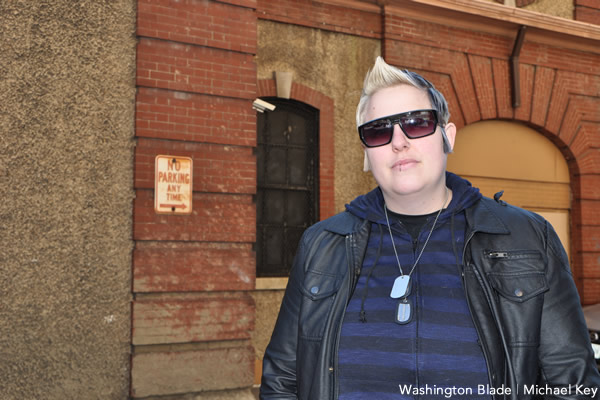
Angela Lombardi (Washington Blade file photo by Michael Key)
“We often got hit by whatever the new party was at the time so we had ups and downs but we made it through all the parties over the years,” she says. The fate of her brainchild, the nationally prominent, eight-year-old Phase Fest indie queer music festival, always held in September, is up in the air.
Her vision, had she had the opportunity, would have been to have a straight bar upstairs to essentially help bankroll Phase 1.
The changing neighborhood, too, was a factor. Though not gentrifying at the rapid pace of, say, Logan Circle/14th Street, N.W., property values there have steadily increased. Though Carroll owns the building (he does not own the Ziegfeld’s/Secrets location), property taxes for 2014 according to District records, were a whopping $31,836. Carroll paid penalties last year for late payments. Taxes for the property jumped significantly in recent years going from about $4,800 in 2006 to nearly $9,700 in 2007 and from nearly $9,600 in 2010 to more than doubling to nearly $23,000 in 2011, according to public D.C. tax records.
“I ran the Phase forever, I know it can’t afford to be on that block anymore, of course not,” Lombardi says.
She also says if Carroll hopes to make the bar successful with a new staff and minimal refurbishing, he’s in for a rude awakening.
“I’m sure he’ll reopen, have some kind of a 45th anniversary event,” she says. “He told me that’s what he’s going to do but if he thinks he’s going to just reopen, he’ll see pretty fast just what it takes to keep it going. It’s going to be pretty rough.”
If it does close, Rindskopf says people need a chance to say goodbye.
“People who’ve supported a bar for years deserve a little consideration,” he says. “I thought [the closing of] Remington’s was handled about as well as it could have been. It doesn’t sound like they’re getting that in this situation. … I believe in being fair to the customers, let alone the employees.”
Senait says even in the last few weeks, things have improved a bit and she and Carroll have spoken.
“My feelings were hurt, but I got over it,” she says. “He calls me now and then. We talked last Monday. This does seem out of character for him so I don’t know what’s going through his head. I don’t even know what kind of changes he’s looking for. He made it sound like he was looking for something different and that’s his choice, it’s his bar. I fully support him and want him to be successful, but I don’t ever want it to be shut down, period. Whether I’m working there or not, it’s there for every queer, lesbian, transgender person to feel safe in those walls. I don’t want that opportunity to go away for anyone. It was never just a bar — it was a community.”
Lombardi, as one might imagine, has mixed feelings.
“There are some of us — and this is how delusional we are — who even though we know there’s like a 95 percent chance it’s over for us, do I hang onto that five percent possibility that he’ll realize the mistake and say, ‘Come back.’ Yeah, I’m hanging onto that five percent.”
She also says even if it ends this way, Carroll still deserves tremendous thanks from the community, many of whom took the bar for granted in Lombardi’s opinion.
“I still have to give him incredible props,” she says. “He’s done more than fucking anyone else, more than any lady, more than anyone for our community and for that he deserves serious accolades. He kept it open through thick and thin. That’s his baby. That’s the bar that started it all for him and Chris. Allen has really fought for 45 years to keep those doors open.”
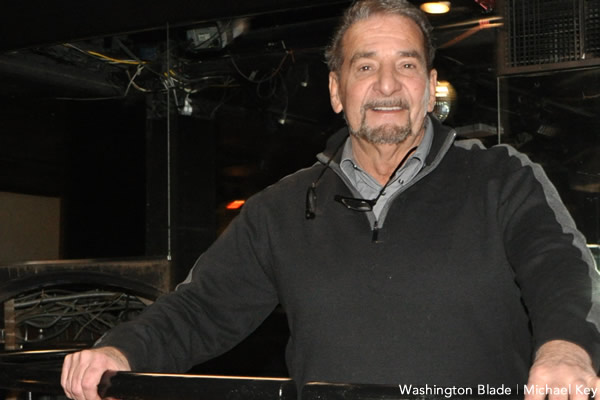
Allen Carroll (Washington Blade photo by Michael Key)

Some gifts scream practical, others whisper luxury, and a few flat-out blur the lines. From cocoa that feels ceremonial to a cologne that linger like a suggestive smirk, this year’s ultimate gift picks prove that thoughtful (and occasionally naughty) presents don’t have to be prosaic. Welcome to your holiday cheat sheet for festive tangibles that get noticed, remembered, and maybe even result in a peck of gratitude planted under the mistletoe. Consensually, of course.
Amber Glass Champagne Flutes
Pop the champs – but make it vintage. These tulip-shaped stunners in amber-tinted glass bring all the Gatsby vibes without the Jazz-age drama. Whether you’re toasting a milestone or celebrating a Tuesday, their seven-ounce capacities and hand-wash-only care make ‘em as practical as they are pretty. Pair with a thoughtful bottle of bubs and gift with a glittering wink. $18, NantucketLooms.com
Disaster Playbook by Here Comes the Apocalypse
Because the end of the world shouldn’t be a solo act, this spiral-bound guide is your step-by-step roadmap to surviving and thriving when everything else goes sideways, which might be sooner than you think. Packed with checklists, drills, and a healthy dose of humor, it’s like a survival manual written by your most prepared (and slightly snarky) friend. Whether you’re prepping for a zombie apocalypse or, more realistically, REVOLUTION!, this playbook’s got your back. $40, HereComesTheApocalypse.com
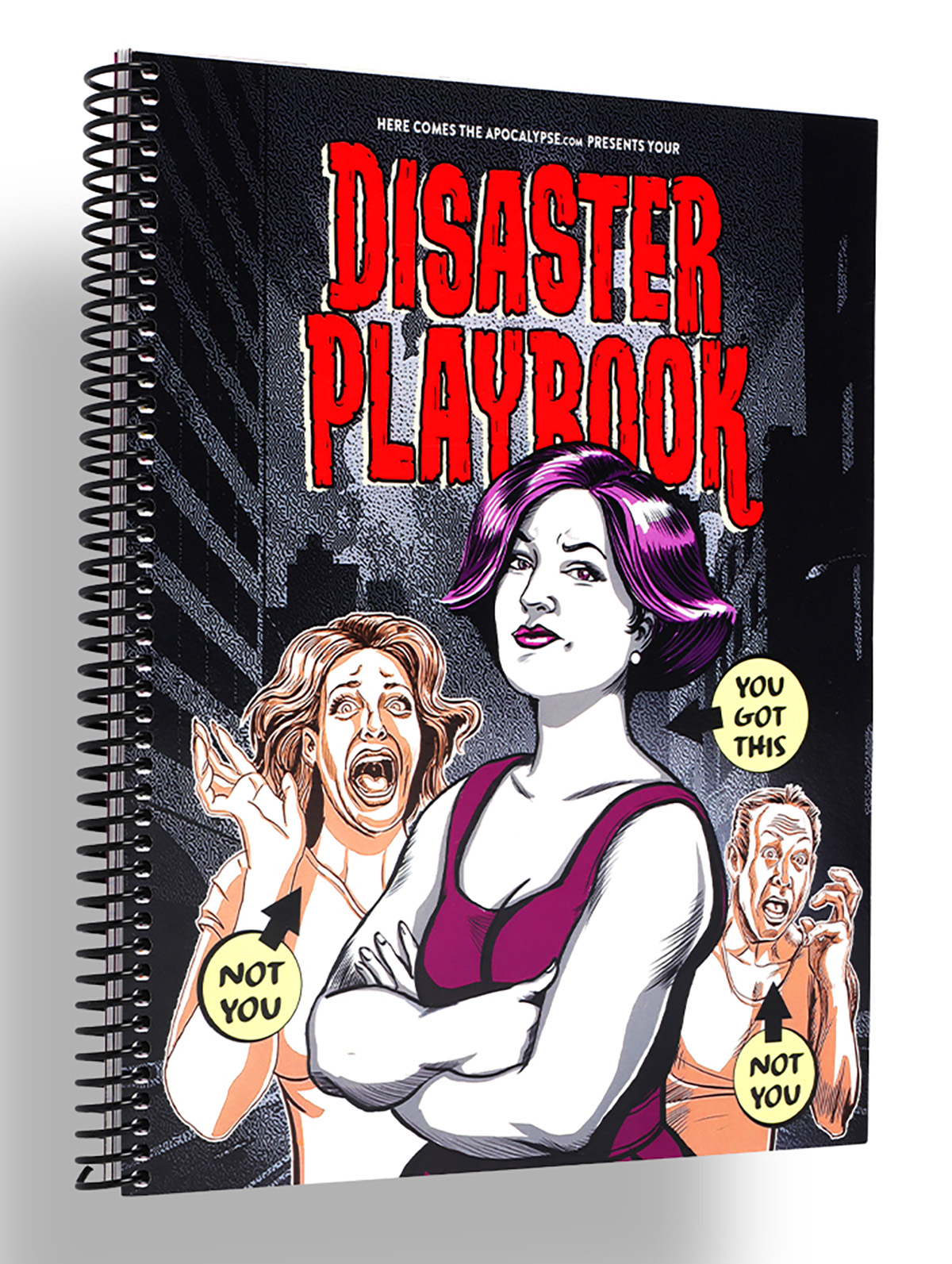
Wickless Vulva Candles
Bold, luxurious, and completely flame-free, CTOAN’s wickless candles melt from beneath on a warmer, releasing subtle, sophisticated fragrances, like sandalwood or lavender. The vulva-shaped wax adds a playful, provocative element to any space –perfect for a bedroom, living room, or anywhere you want elegance with an edge. A gift that celebrates form, intimacy and self-expression, no fire required. $39, CTOANCO.com
Villeroy & Boch Royal Classic Christmas Collection
Every meal is a mini celebration – with whimsy at every place setting – in Villeroy & Boch’s Royal Classic festive dinnerware collection that hits all the right notes. Made from premium German porcelain, it features nostalgic little toys, nutcrackers, and rocking horses in delicate relief, giving your holiday spread a playful but refined twist. Dishwasher- and microwave-safe, it’s luxe without the fuss. Gift a piece to a special someone, or start a collection they’ll use (and show off) for years to come. $22-$363, Villeroy-Boch.com
Greenworks Electric Lawnmower
You a ’hood queen who considers lawn care performance art – or just wants to rule the cul-de-sac in quiet, emission-free glory? Greenworks’ zero-turn electric mower has the muscle of a 24-horsepower gas engine but none of the fumes, drama or maintenance. Six 60V batteries and a 42-inch deck mean you can mow up to two-and-a-half acres on a single charge – then plug in, recharge, and ride again. It’s whisper-quiet, slope-ready, and smooth enough to make you wonder why you ever pushed anything besides your queer agenda. The perfect gift for the homeowner who loves sustainability, symmetry, and showing off their freshly striped yard like that fresh fade you get on Fridays. $5,000, GreenworksTools.com
Molekule Air Purifier
For the friend who treats their space like a sanctuary (or just can’t stand sneezes), the Molekule Air Pro is magic in motion. Covering up to 1,000 square feet, it doesn’t just capture allergens, VOCs, and smoke – it destroys them, leaving your air feeling luxury-clean. FDA-cleared as a Class II medical device, it’s serious science disguised as modern design. Gift it to your city-dwelling, pet-loving, candle-burning friend who likes their living room as pristine as their Instagram feed. $1,015, Molekule.com
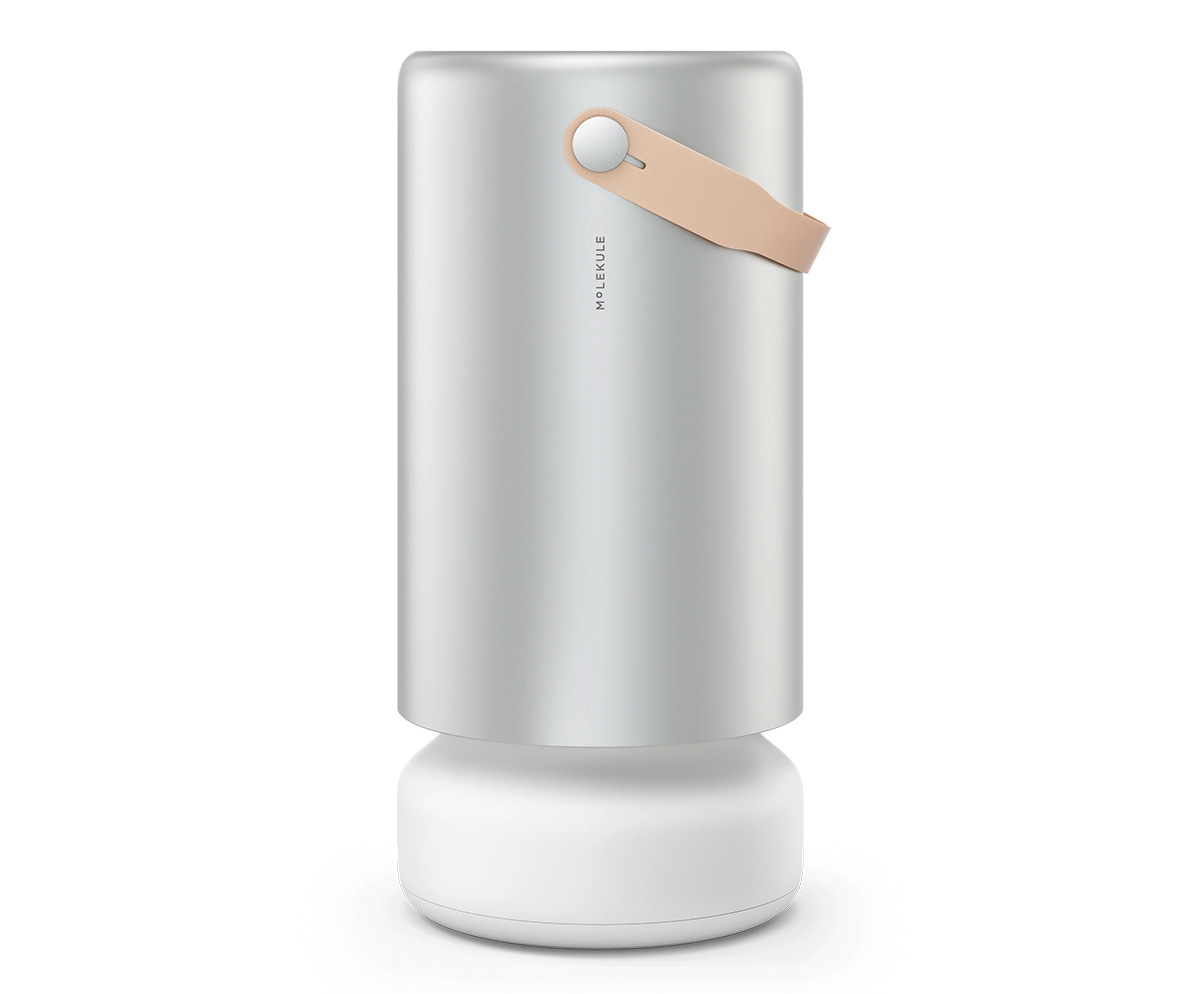
Cipriani Prosecco Gift Set
Effervescent with stone-fruit sweetness and a touch of Italian flair, the Cipriani Bellini & Prosecco gift set brings brunch-level glamour to any day of the week. The Bellini blends rich white-peach purée with sparkling wine, while the dry ’secco keeps things crisp and celebratory. Pop a bottle, pour a flute, and suddenly winter weeknights feel like a party – even with your pants off. $36, TotalWine.com
Woo(e)d Cologne
British GQ recently crowned Woo(e)d by ALTAIA the “Best Date Night Fragrance,” and honestly, they nailed it. Confident without being cocky – smoky gaïac and Atlas cedarwood grounds the room while supple leather and spicy cardamom do all the flirting – it’s a scent that lingers like good conversation and soft candlelight. Gift it to the one who always turns heads – or keep it for yourself and let them come to (and then on) you. $255, BeautyHabit.com

Lococo Cocoa Kit
Keep the run-of-the-mill mugs in the cabinet this Christmas and pull out Lococo’s handcrafted Oaxacan versions that demand you slow down and sip like it matters. Paired with a wooden scoop, rechargeable frother, and Lococo’s signature spice hot-chocolate blend (vegan, gluten-free, with adaptogenic mushrooms), this holiday kit turns Mexi-cocoa into a mini ritual you’ll look forward to. Perfect for anyone who loves a little indulgence with a side of ¡A huevo! energy.
Manta Sleep Mask
Total blackout, zero pressure on the eyes, and Bluetooth speakers built right into the straps, this ain’t your mama’s sleep mask — but it could be. The Manta SOUND sleep mask features C-shaped eye cups that block every hint of light while ultra-thin speakers deliver your favorite white noise, meditation, or late-night playlist straight to your ears. With 24-hour battery life, breathable fabric, and easy-to-adjust sound, it turns any bed (or airplane seat) into a five-star sleep suite. Perfect for anyone who treats shut-eye like an art form (or just wants to escape their roommate’s late-night bingin’ and/or bangin’). $159, MantaSleep.com

Shacklelock Necklace
Turn the industrial-chic vibe of a shackle into a sleek statement. Mi Tesoro’s platinum-plated stainless-steel necklace sits on an 18-inch wheat chain, featuring a shackle-style latch pendant that’s waterproof, tarnish-free, and totally fuss-les. Beyond style, it nods to a classic gesture in the queer leather community: replacing a traditional Master lock with something elegant to quietly signal belonging to someone special. Wear it solo for a minimalist edge or layer it like you mean it; either way this piece locks in both your look and your intentions. $90, MiTesoroJewelry.com
Parkside Flask Mojave Edition
Wine nights get a desert glow-up with Parkside’s limited-edition 750-milliliter all-in-one flask draped in sun-washed bronze and badland hues like sage, sand, and terracotta – with magnetic stemless tumblers that snap on for effortless shareability. It keeps your vino chilled for 24 hours, pours without drips (no tears for spilled rosé, please), and even lets you laser-engrave your own mantra or inside joke. Perfect for picnics, surprise rooftop clinks, or gifting to your favorite wine (or desert) rat. $149, HighCampFlasks.com

Mikey Rox is an award-winning journalist and LGBT lifestyle expert whose work has published in more than 100 outlets across the world. Connect with him on Instagram @mikeyroxtravels.
a&e features
Meet Mr. Christmas
Hallmark’s Jonathan Bennett on telling gay love stories for mainstream audiences

Jonathan Bennett believes there are two kinds of people in the world — those who love Hallmark movies and liars. And in Season 2 of Finding Mr. Christmas, which the Mean Girls star co-created with Ben Roy, Bennett is searching for Hallmark’s next leading man.
“It’s so fun for people because everyone in their life has someone they know that they think should be in Hallmark movies, right? The UPS driver, the barista at the coffee shop, the dentist,” Bennett says. “So we’re testing their acting abilities, we’re testing who they are, but we’re also looking for that star quality — the thing that makes them shine above everyone else. It’s almost something you can’t explain, but we know it when we see it.”
Season 2’s cast includes a former NFL player for the Green Bay Packers, a few actors, and a realtor. The 10 men compete in weekly festive-themed acting challenges, one of which included having to ride a horse and act out a scene with Alison Sweeney. The contestants were chosen from a crop of 360 potential men, and Bennett gives kudos to the show’s Emmy-nominated casting director, Lindsay Liles (The Bachelor, Bachelor in Paradise).
“She has a tough job because she has to find 10 guys that are going to be good reality television, but also have the talent to act, carry a scene, and lead a Hallmark movie eventually,” he says. To be the right fit for a Hallmark leading man, Bennett singles out five key characteristics: you have to be funny, charming, kind, have a sense of humor, and you have to do it all with a big heart.
Of course, Finding Mr. Christmas wouldn’t be Finding Mr. Christmas without its signature eye candy — something Bennett describes as “part of the job” for the contestants. “I can’t believe Hallmark let me get away with this. I dressed them as sexy reindeer and put them in harnesses attached to a cable 30 feet in the air, and they had to do a sexy reindeer photo shoot challenge,” he says with a laugh. “This season is just bigger and bolder than last. People are responding to not only all the craziness that we put them through, but also comparing and contrasting the guys in their acting scenes when we do them back-to-back.”
Season 1 winner Ezra Moreland’s career has been an early testament to the show’s success at finding rising talent. On seeing the show’s first winner flourish, Bennett says, “Now to watch him out in the world, just booking commercial after commercial and shining as an actor and a model, I think the show gave him the wings to do that. He learned so much about himself, and he took all that into his future auditions and casting. He just works nonstop. I’ve never seen an actor book more commercials and modeling gigs in my life.”
Bennett has been a star of plenty of Hallmark movies himself, including the GLAAD-award-winning The Groomsmen: Second Chances, which makes him a fitting host. Among those movies are 2020’s Christmas House, which featured the first same-sex kiss on the network and had a major impact on Bennett’s career as an openly gay man. “Hallmark’s been so great about supporting me in queer storytelling. But again, I don’t make gay movies for gay audiences. I make gay love stories for a broad audience, and that’s a huge difference, right? We’re not telling stories inside baseball that only the gay community will understand.”
He continues, “The backdrop of a Hallmark Christmas movie is very familiar to these people who watch. And so when you tell a gay love story, and you tell it no differently than a straight love story in that space, they’re able to understand. It’s able to change hearts and minds for people who might not have it in their lives.”
While Hallmark has become a major staple of Bennett’s career, he started off wanting to be a Broadway actor. And before the first season of Finding Mr. Christmas aired, Bennett took a break from TV to make his Broadway debut in Spamalot, replacing Michael Urie as Sir Robin and starring alongside Ethan Slater and Alex Brightman.
“That was my dream since I was five years old – then I booked a movie called Mean Girls, and everything kind of changes in your life. You no longer become a person pursuing Broadway, you become a part of pop culture,” Bennett recalls. “And to be honest, when I hit 40, I was like, ‘I’m probably never going to get to live that dream.’ And that’s okay, because I got to do other dreams and other things that were just as cool but different. So I honestly never thought it would happen.”
Bennett is still determined to make his way back on Broadway with the right role — he calls Spamalot the “best experience” of his life, after all — but he’s got another Hallmark show lined up with Murder Mystery House, which he co-created. The show was recently greenlit for development and intends to bring the Hallmark mystery movie to life. “It’s kind of like our version of The Traitors,” Bennett admits.
Looking back on both seasons, Bennett says that what makes Finding Mr. Christmas stand out in the overcrowded reality TV landscape is that everyone involved makes it with heart: “This isn’t a show where you’re going to watch people throw drinks in each other’s faces and get into big fights. The thing that has amazed me so much about this show, the more we’ve done it, is that every season, 10 guys come in as competitors, but they leave as a family and as brothers. That’s something you don’t get on any other network.”
Finding Mr. Christmas airs every Monday on Hallmark through December 20, with episodes available to stream on Hallmark+.
a&e features
Guillermo Diaz on his role as a queer, Latino actor in Hollywood
Shattering stereotypes and norms with long resume of roles
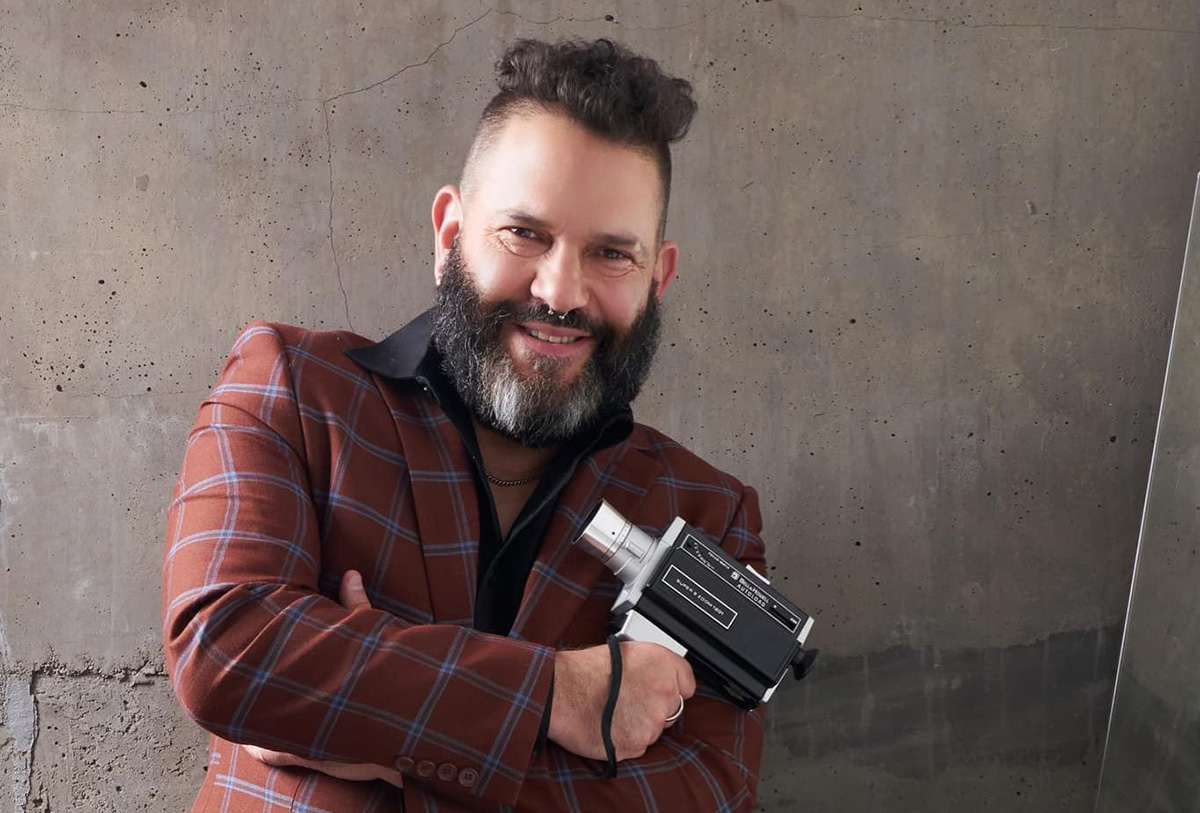
Actor Guillermo Diaz has been working hard in the entertainment industry for more than three decades. Proud of his heritage and queer identity, he has broken through many glass ceilings to have a prolific career that includes tentpole moments such as roles in the films Party Girl, Half Baked, and Bros, and in major TV shows like Weeds and Scandal, and even in a Britney Spears music video. This season, he made his feature-length directorial debut with the film Dear Luke, Love Me.
In an intimate sit-down with the Blade, Diaz shares that he attributes a lot of his success to his Cuban upbringing.
“Well, it prepared me to learn how to lie really well and be a good actor because it was a lot of acting like you were straight, back in the eighties and nineties (laugh). Another thing I learned from my Cuban immigrant parents is that they work super hard. They both had two jobs; we were latchkey kids, and I just saw them constantly working and wanting to provide for us by any means. So that was super instilled in me. That was the one thing that really stuck out that I admire and respect.”
Besides Diaz’s recurring roles on TV, his resume includes appearances in just about every genre of programming out there. If there is a major show out there, he was probably on it. Law and Order, Girls, The Closer, Chappelle’s Show, ER, Party of Five, and the list goes on. He’s accomplished more in his career thus far than most actors do in a lifetime. There is no doubt he is a hard worker.
“It’s a sign that I just loved to work, and it’s funny looking back at it now because you see all those things, but at the time it was just the next gig, the next job. I was just wanting to keep working and acting and learning and doing all that stuff. Then it sort of accumulates, and you look back and you’re like, damn! That’s a lot of stuff!”
Acting was never on Diaz’s radar until he was asked to fill in for a friend in a Beastie Boys medley for a talent show when he was a sophomore in high school.
“I did it and fell in love with it. I was teased a lot in high school. Then, when I did that performance, all those people who teased me were like, you were so great! So I looked at it initially as a thing of like, oh, this is where I’m accepted and people like me when I’m on stage. It’s kind of sad, too, because that’s what I latched onto. And then of course, I fell in love with the craft and performing and acting, but that initial rush was because all these people who were messing with me and teasing me all of a sudden liked me. And I was like, this is what I have to do.”
Little did Diaz know that he would break the mold when it came to stereotypical casting. When he first hit the industry, diversity and positive representation were not a thing in Hollywood.
“You just kind of accepted at the time. It was the early nineties. 90% of the time, it was playing a thug or a gun dealer, or a crack head – it was all bad guys, negative characters. But it was either that or not act and not be in anything. So you just kind of accept it, and then you have this sort of vision or hope that in the future it’s going to get better.
Diaz’s management was trepidatious about him playing gay roles for fear of being typecast. But Diaz did play a handful of gay roles early on, although he passed on But I’m A Cheerleader, which went on to become a gay cult classic. Diaz decided early on that he was not going to hide his sexuality. Diaz appeared in the film Stonewall. That was the defining point for him in sharing his identity.
“Being cast in that historical sort of dramatization of the 1969 Stonewall riots – I couldn’t believe I was in the midst that I was in the middle of doing this and playing the lead drag queen on the film. I just felt so honored, and I knew it was important, and I knew I needed to do a really good job. I thought, what a special moment this is. And it kicked my ass shooting that movie.
I remember after doing Stonewall, people saying, well, now you’re either going to have to make a choice if you’re going to lie, or if you’re going to just be honest, and you’re going to have to be out from now on if you’re going to be honest. And I was like, I’m not going to freaking lie. When they’d asked me, I would say I was gay. I think because I never tried to hide it, it didn’t become a thing. So people just kind of ignored it. It didn’t mess with me or my career. I don’t know. Or I just got lucky. I don’t freaking know.”
As a queer, Latin actor, Diaz is all too aware of what is happening politically and socially in the world towards minority communities. Does he think actors have a place in politics?
“For sure. I mean, we’re people first, right? Like, I hate when people sort of are like, oh, you’re an actor, shut up. I’m super political and outspoken, and I’m that guy who will say shit. I’m on the right side of history, at least. I’m not being complicit and silent. So, yeah, I think actors for sure have a place in politics. Absolutely.”
While directing was on Diaz’s radar, it wasn’t something that he was actively searching out. But as life would have it, his friend Mallie McCown sent him her script for Dear Luke, Love Me, a film she would play the lead in. Diaz was hooked.
“It was one of those scripts that I had to keep putting down every like 20 pages. I would put it down because I didn’t want it to end. It was so good. Originally, I was just going to come on as a producer of the film, and then the director dropped out, and then Mallie asked me if I was interested in directing. I was scared as shit. I had never directed a feature film. But I was like, it’s now or never.”
The film covers a decade of the friendship between Penny and Luke, covering themes of platonic love, asexuality, co-dependence, and self-identity. With most of the film focusing on just the two leads, Diaz has crafted an intimate and raw film. What is his message with the film?
“That love is complicated, but it’s beautiful and rewarding and worth all the heartache. I believe that. I don’t want to give away too much in the film either, but I think everyone can relate to it because there’s heartache and there’s pain, and there’s beauty and there’s love.”
And in looking at his past work and in looking toward his future career, what kind of legacy does Diaz want to build?
“That I broke some ground, that I knocked down some walls as an artist; I’m hoping that made a difference. It’s funny because when you’re in it, you’re not thinking about all this stuff that could possibly pave the way for other people. You’re just kind of moving along and living your life. But yeah, I would hope that I broke down some walls as a queer Latino.
I hope that people can sort of get something out of me trying to live as authentically as I can, just being my queer self. Hopefully, that helps someone along who is having some troubles being accepted or being comfortable with who they are.”
-

 The White House4 days ago
The White House4 days ago‘Lavender Scare 2.0’: inside the White House’s campaign against LGBTQ federal employees
-

 a&e features3 days ago
a&e features3 days agoMeet Mr. Christmas
-

 District of Columbia4 days ago
District of Columbia4 days agoActivists praise Mayor Bowser’s impact on city, LGBTQ community
-

 National5 days ago
National5 days agoVictory Institute to honor Biden at D.C. conference

